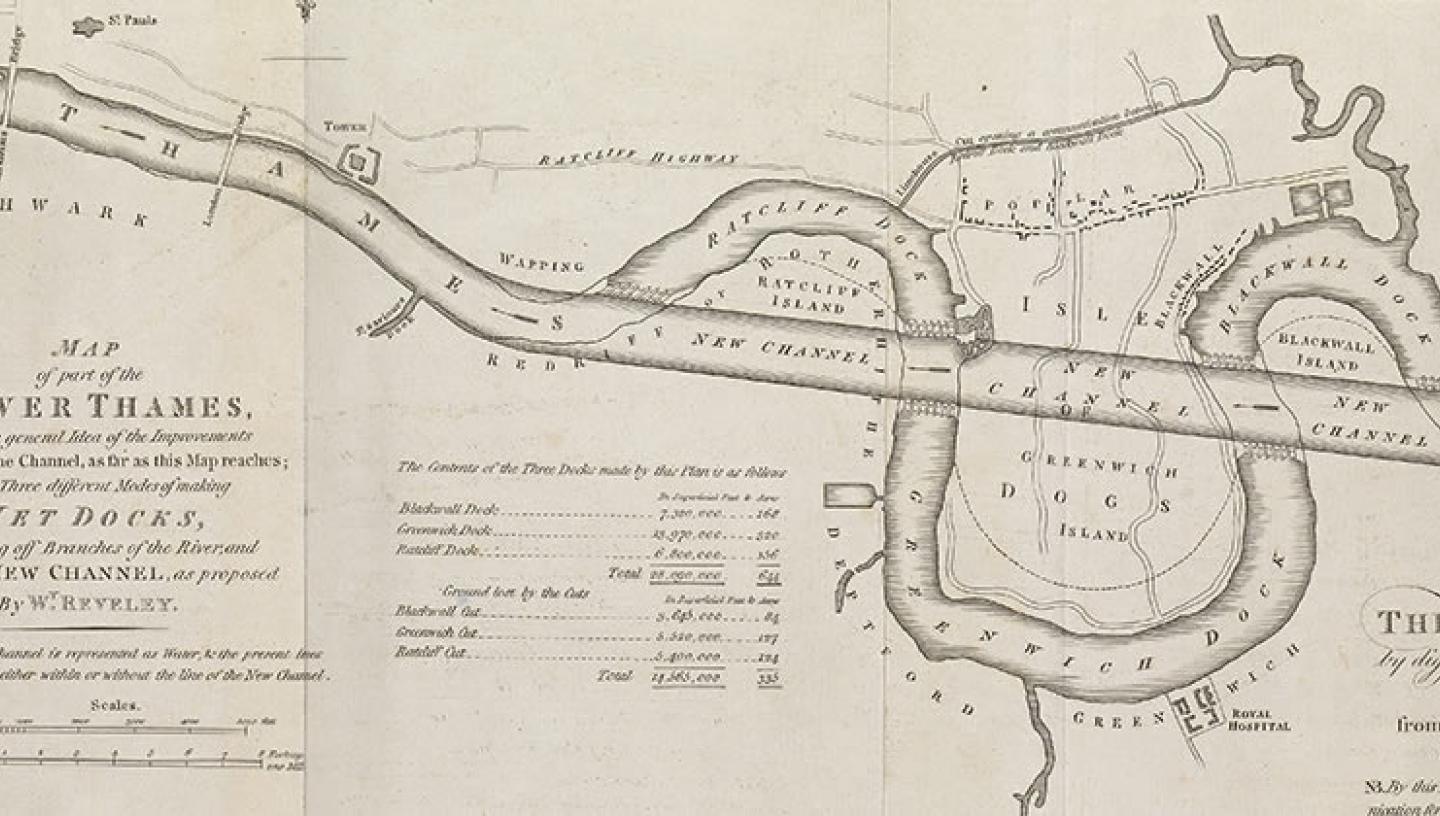
13 Sep 2016
Caird Fellow Hannah Stockton reveals how new dock plans in the late 18th century could have dramatically changed the layout of London and the Thames.
In 1796, architect Willey Reveley submitted four proposals to create new wet docks for the Port of London. If his plans had been selected, they would have radically transformed the modern city.
The Port of London, unknown artist. National Maritime Museum, PAD1383.
‘Embarrassments to Commerce’ was how a Parliamentary Committee described the Port of London in 1796 (ref 1). The growth of shipping over the 18th century had left the existing quays inadequate – leading to overcrowding, accidents and theft from ships.
Detail from Third Plan making Three Wet Docks, Willey Reveley (1796). National Maritime Museum, GRB 218:9/41 (3).
Reveley’s response was the most dramatic – he proposed cutting an artificial channel slicing through the river’s iconic loop, creating three new docks from the remainder.
This shocking design highlights the vital role of the Thames in the expansion of Britain’s commercial and imperial interests in the eighteenth century, that ensuring the smooth-running of the Port was seen as ‘one of the best securities and encouragements to our commerce, and prosperity to our country’. (ref 2)
Hannah Stockton, Caird Fellow
References
- Report from the Committee appointed To enquire into the best Mode of providing sufficient Accommodation for the increased Trade and Shipping of the Port of London (London, 1796), p. xv, p. x
- William Vaughan, On Wet Docks, Quays, and Warehouses, for the Port of London; with Hints respecting Trade (London, 1793), Preface.
Maritime Lecture series
Join us for a special Maritime Lecture series looking at the archaeology of the Thames, Thursdays till 6 October. Part of the Totally Thames Festival.